Abstract
Computer analysis of Staphylococcus aureus phage ty ping data collected for over 18 years in a large research hospital showed a drastic decrease in the number of hospital epidemic strains. Phage lysis patterns gradually modified from those of earlier years and were a reflection of changes within the S. aureus reservoir, and not within the typing phages, since the typing phages were used from stable lyophilized stocks. There was increasing cross-lysis of S. aureus strains by phages of lytic groups I, II, and III, such that this grouping was no longer epidemiologically valid. A 61% increase in unique strains occurred from the period 1957 to 1975. Disappearance of the widely recognized epidemic strains was followed by a proliferation of unique strains with individual phage patterns. These increased from 38% in the period 1957 to 1962 to 62% in the period 1969 to 1975, indicating a trend toward a "one patient-one strain" situation. Nontypable strains decreased in more recent years from 16% (1957 to 1975) to 7% in 1978, following introduction of phages 94, 96, 292, and D-11. Pandemic S. aureus strain 80/81 first appeared in this hospital in 1959, 5 years after it was first reported in the United States. Strain 80/81 disappeared from the hospital in 1963, partly due to the advent of methicillin.
Full text
PDF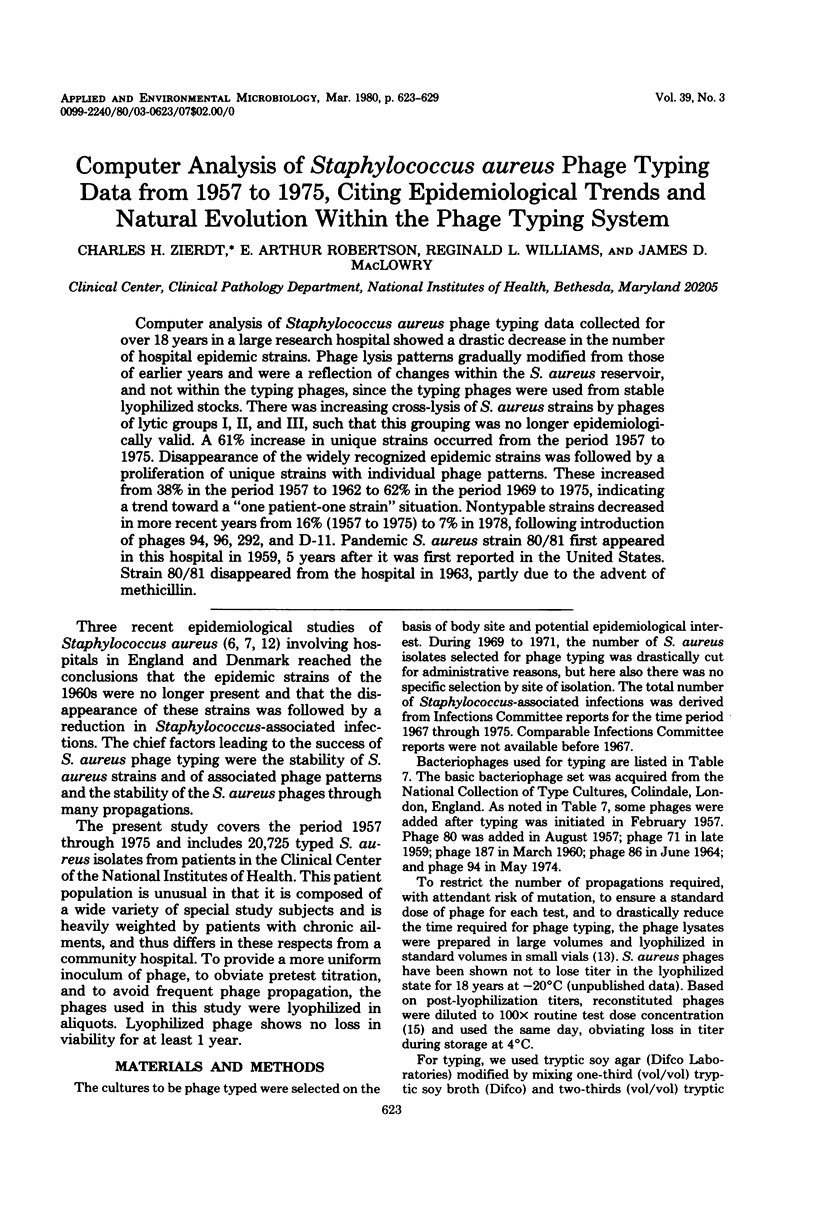
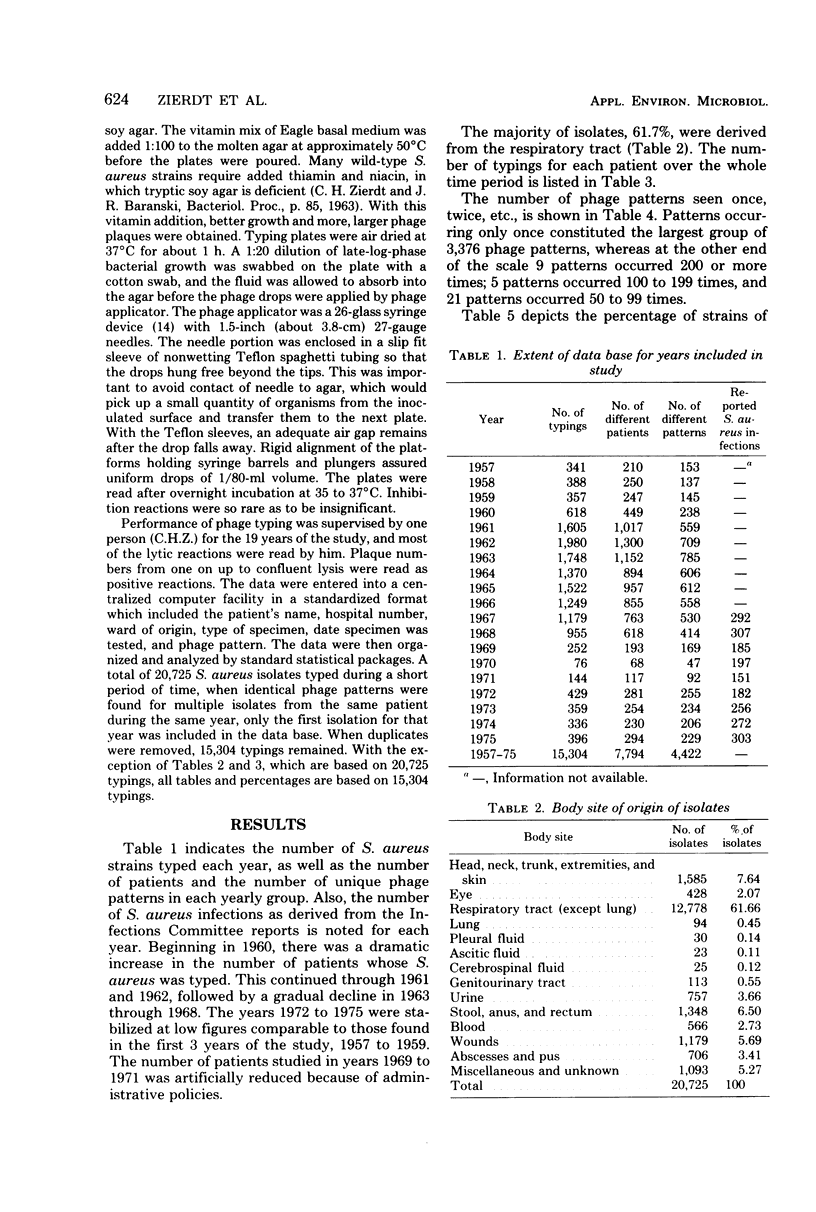
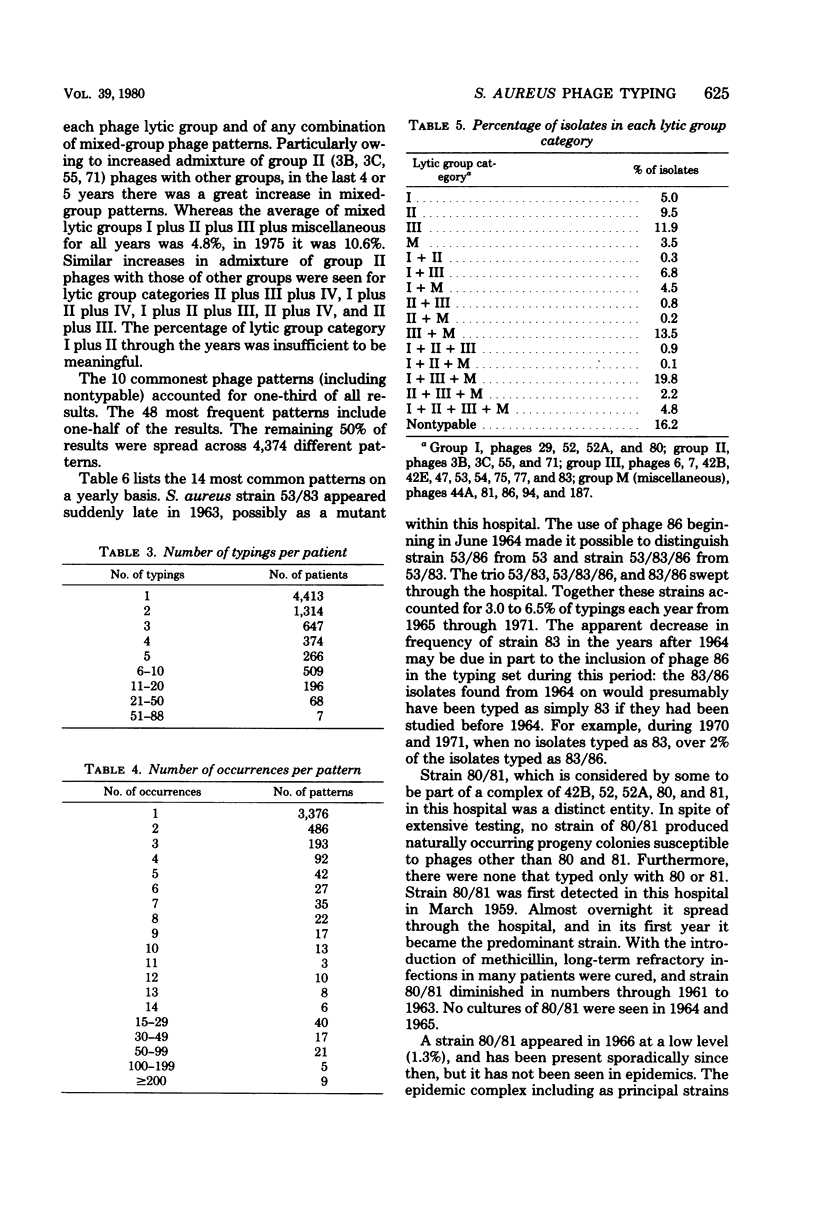
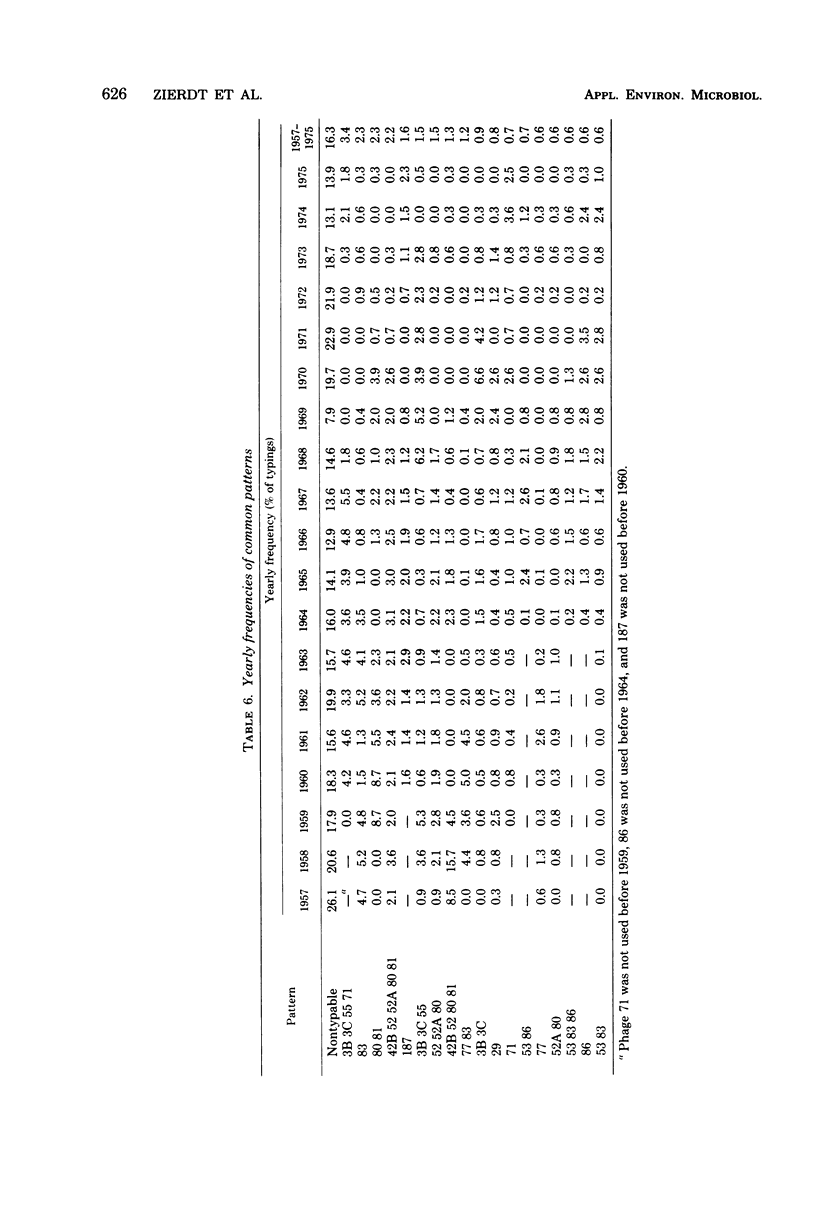
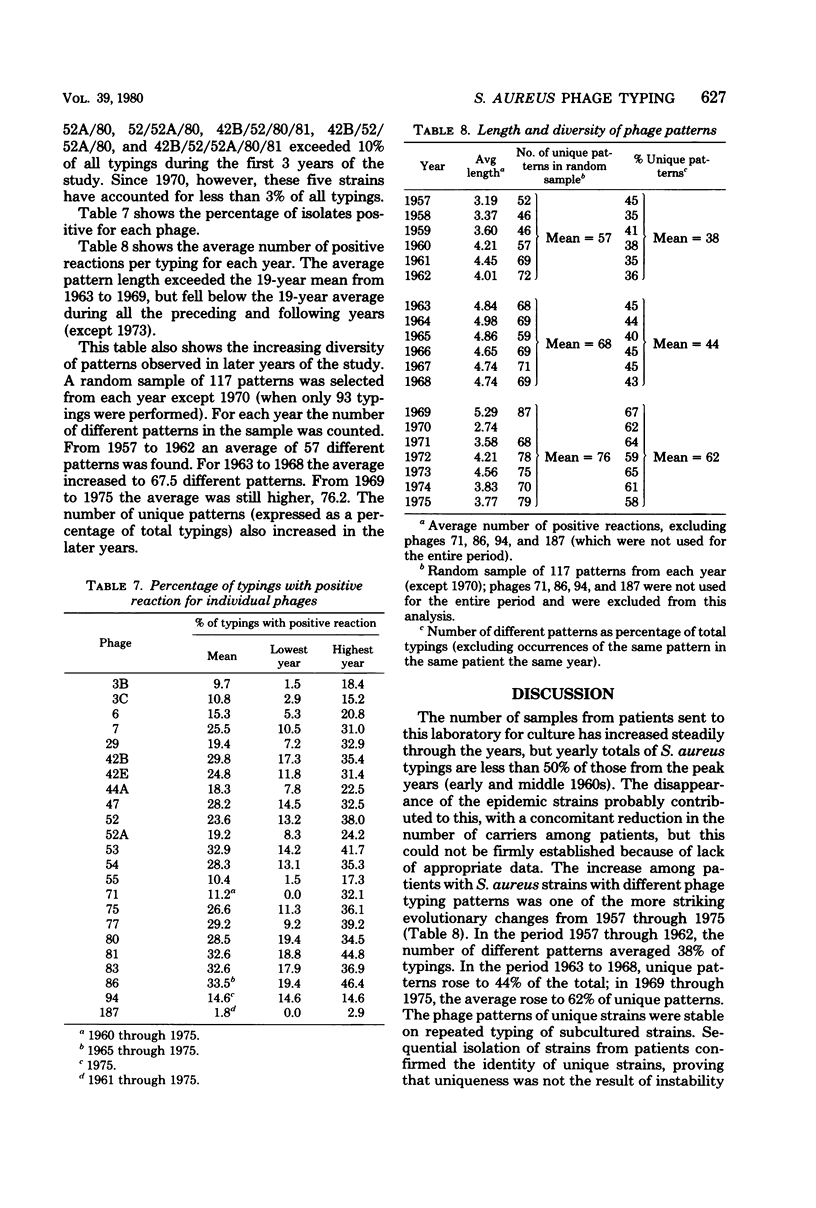

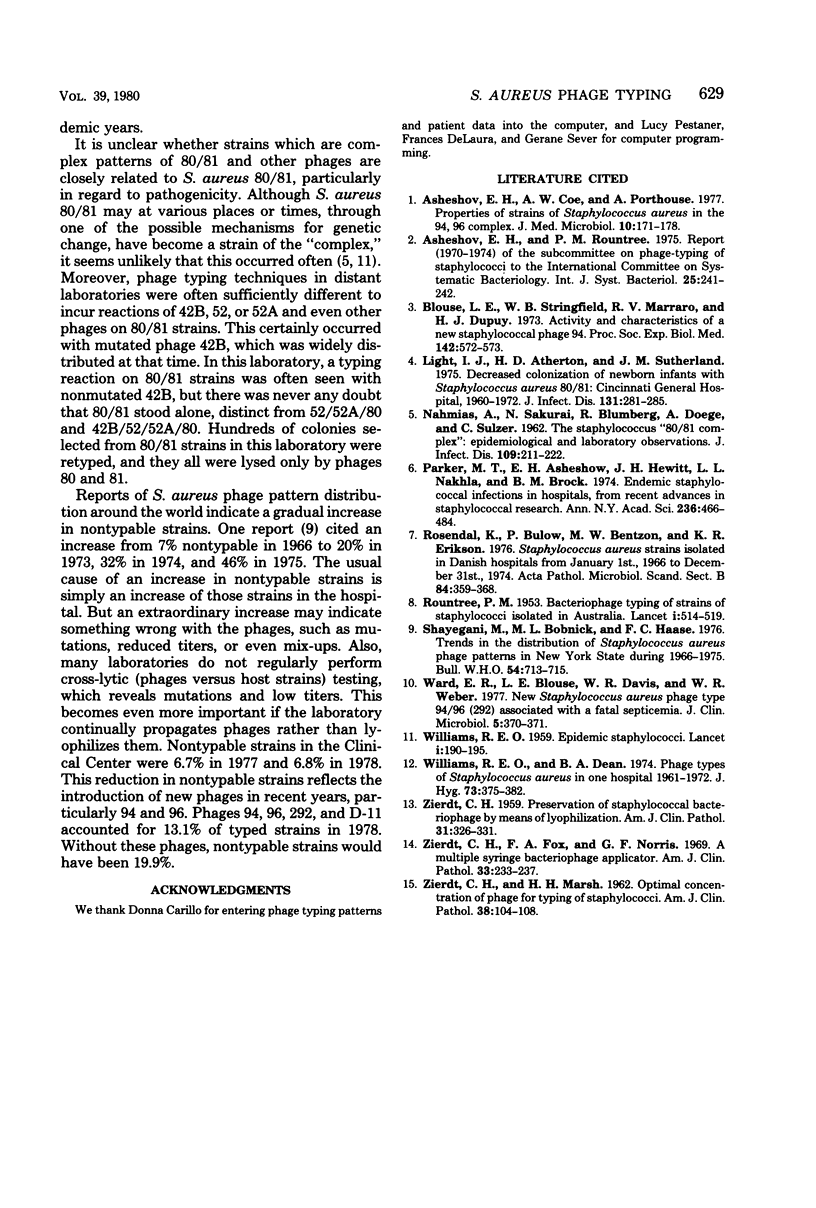
Selected References
These references are in PubMed. This may not be the complete list of references from this article.
- Asheshov E. H., Coe A. W., Porthouse A. Properties of strains of Staphylococcus aureus in the 94, 96 complex. J Med Microbiol. 1977 May;10(2):171–178. doi: 10.1099/00222615-10-2-171. [DOI] [PubMed] [Google Scholar]
- Blouse L. E., Stringfield W. B., Marraro R. V., Dupuy H. J. Activity and characteristics of a new staphylococcus phage 94. Proc Soc Exp Biol Med. 1973 Feb;142(2):572–576. doi: 10.3181/00379727-142-37069. [DOI] [PubMed] [Google Scholar]
- Light I. J., Atherton H. D., Sutherland J. M. Decreased colonization of newborn infants with Staphylococcus aureus 80/81: Cincinnati General Hospital, 1960-1972. J Infect Dis. 1975 Mar;131(3):281–285. doi: 10.1093/infdis/131.3.281. [DOI] [PubMed] [Google Scholar]
- NAHMIAS A., SAKURAI N., BLUMBERG R., DOE GE A., SULZER C. The Staphylococcus "80/81 complex: epidemiological and laboratory observations. J Infect Dis. 1961 Nov-Dec;109:211–222. doi: 10.1093/infdis/109.3.211. [DOI] [PubMed] [Google Scholar]
- Parker M. T., Asheshov E. H., Hewitt J. H., Nakhla L. S., Brock B. M. Endemic staphylococcal infections in hospitals. Ann N Y Acad Sci. 1974 Jul 31;236(0):466–484. doi: 10.1111/j.1749-6632.1974.tb41511.x. [DOI] [PubMed] [Google Scholar]
- ROUNTREE P. M. Bacteriophage typing of strains of staphylococci isolated in Australia. Lancet. 1953 Mar 14;1(6759):514–516. doi: 10.1016/s0140-6736(53)92358-7. [DOI] [PubMed] [Google Scholar]
- Rosendal K., Bülow P., Bentzon M. W., Eriksen K. R. Staphylococcus aureus strains isolated in Danish hospitals from January 1st, 1966, to December 31st, 1974. Acta Pathol Microbiol Scand B. 1976 Dec;84B(6):359–368. doi: 10.1111/j.1699-0463.1976.tb01953.x. [DOI] [PubMed] [Google Scholar]
- Shayegani M., Bobnick M. L., Haase F. C. Trends in the distribution of Staphylococcus aureus phage patterns in New York State during 1966-1975. Bull World Health Organ. 1976;54(6):713–715. [PMC free article] [PubMed] [Google Scholar]
- WILLIAMS R. E. Epidemic staphylococci. Lancet. 1959 Jan 24;1(7065):190–195. doi: 10.1016/s0140-6736(59)90383-6. [DOI] [PubMed] [Google Scholar]
- Ward E. R., Blouse L. E., Davis W. R., Weber W. R. New Staphylococcus aureus phage type 94/96(292) associated with a fatal septicemia. J Clin Microbiol. 1977 Mar;5(3):370–371. doi: 10.1128/jcm.5.3.370-371.1977. [DOI] [PMC free article] [PubMed] [Google Scholar]
- Williams R. E., Dean B. A. Phage types of Staphylococcus aureus in one hospital 1961-72. J Hyg (Lond) 1974 Dec;73(3):375–382. doi: 10.1017/s0022172400042728. [DOI] [PMC free article] [PubMed] [Google Scholar]
- ZIERDT C. H., FOX F. A., NORRIS G. F. A multiple-syringe bacteriophage applicator. Am J Clin Pathol. 1960 Mar;33:233–237. doi: 10.1093/ajcp/33.3.233. [DOI] [PubMed] [Google Scholar]
- ZIERDT C. H. Preservation of staphylococcal bacteriophage by means of lyophilization. Am J Clin Pathol. 1959 Apr;31(4):326–331. doi: 10.1093/ajcp/31.4.326. [DOI] [PubMed] [Google Scholar]


